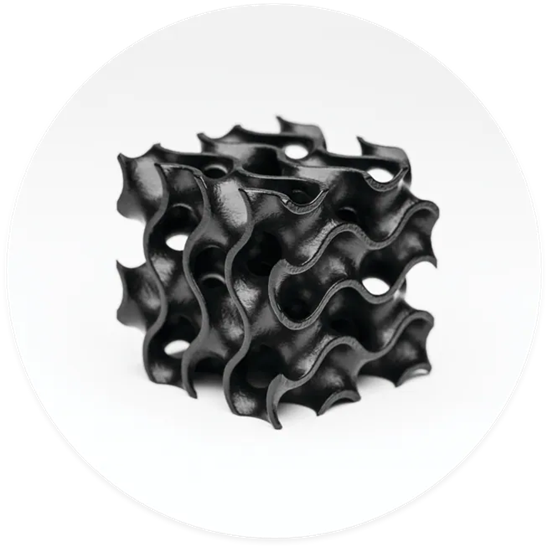Stratasys High Yield PA11 enables a high nesting density while maintaining high part consistency to deliver production yields. PA11 offers high ductility and impact resistance which makes it suitable for a wide range of industrial applications and volume production of end-use parts. PA11 is ecofriendly and 100% bio-based from sustainable castor oil.

🎉🎉🎉 Now Unionfab offers PA11 with SAF Technolohy. 🎉🎉🎉
Nylon is a polyamide (PA) synthetic polymer that can be used in additive manufacturing as a filament (PA6) for FDM 3D printing technology or as a powder (PA11 and PA12) for technologies such as SLS selective laser sintering or HP's MultiJet Fusion.
Compared to materials such as PLA or photosensitive resins, nylon prints are tougher and stronger and are a highly used material in the 3D printing industry, but it is also subject to some controversy. For example, the composition of polyamide, the recyclability and reusability of the material, and the gas emissions during the manufacturing process. In addition, environmental issues are an aspect that all companies are considering and must take into account today.
PA6 - a 3D printing filament for demanding use conditions
PA6 filament is a semi-crystalline thermoplastic polymer and is one of the most widely used polyamides in the world. with a melting point of 220°C, PA6 is used in a wide range of applications due to its good performance/cost ratio. Although it has traditionally been used in industrial manufacturing, it has gradually gained popularity in 3D printing due to its excellent mechanical properties and ability to create high performance parts. In addition, PA6 is a more difficult material to 3D print than standard plastics such as PLA or ABS. It has an operating temperature range of 250-270°C, so it is important to ensure that there is a suitable working environment to ensure that it does not shrink.
Nylon comes from a different source to other types of polyamides in that it is formed by ring-opening polymerisation, i.e. through one of the many routes of polymer synthesis. This makes it a comparative special case of both condensation (where the whole monomer molecule becomes part of the polymer) and addition (where the monomer molecule loses a part when it becomes part of the polymer) polymers. When analysing the environmental impact of PA6 and moving towards a more sustainable material, two important aspects must be taken into account. The first is the production process used to obtain the material and the second is the raw material involved in that conversion process; both will determine the carbon footprint of this polyamide.

Composition of PA11 and PA12 and their impact on the environment
Chemically, PA11 and 12 are very similar, even though they differ by only one carbon atom in the main chain of the polymer. However, this one atom makes a huge difference in the way the polymer is organised, resulting in a different substance. Beyond this, the main difference between polyamide powders for 3D printing is their origin. PA11 is a semi-crystalline polymer that is produced from "green" raw materials and is synthesised in a process closer to PA6 than PA12. This type of nylon is bio-based, i.e. it is produced from renewable raw materials derived from plant derivatives, mainly castor oil. As far as its applications are concerned, PA11 is mainly used where good chemical resistance, flexibility, low permeability and dimensional stability are required. In other words, in aggressive environments and in functional prototype components exposed to these conditions.

PA12 is a fine synthetic powder, generally derived from petroleum. Its basic properties are given by the chemical structure of the polyamide itself, as well as by the additives or fibres added to the composition. Its most important properties are its high resistance to chemical agents, environmental conditions and impacts, as well as its low water absorption, high processability and, finally, its good abrasion and sliding properties. Among its main applications, this plastic is used in advanced industries, such as the automotive or aerospace industries. As we have already mentioned, its excellent mechanical properties make it a key material in this type of specialised field.
The Sculpteo website illustrates the gap between these two polyamides when referring to the PA11HP material. The website states: "Our PA11 HP is based on a 100% renewable biomass source. Extracted from the castor plant ricinus communis, the oil is then converted into a monomer (11-aminoundecanoic acid) and finally polymerised into PA11. This PA11 material is a sustainable alternative to PA12 and can be used to manufacture parts that come into contact with the skin". This suggests that PA11 should be the first bioplastic to be transformed as far as sustainability is concerned, although the application of the final 3D printed part also needs to be taken into account.



